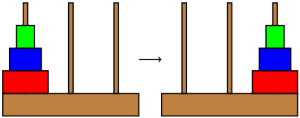Hello everyone!
Mathematics is often presented as if it's a body of knowledge which people have known forever. But that's not the case; modern math has come about through the work of millions of clever people over thousands of years. I don't have time to talk about everyone, of course, but I thought it would be interesting to at least discuss a few of the great mathematicians. There aren't many mathematicians greater than Archimedes, so he seems a natural first choice.
(Portrait by Domenico Fetti (1620). Image taken from Wikipedia.)
Archimedes of Syracuse (c. 287 - 212 BC) is perhaps most famous for a case of public nudity. As the story goes, a king suspected his crown was not pure gold, but had instead been made with a mixture of gold and silver. He asked Archimedes to find a way to check without damaging the crown. When Archimedes stepped into the bath that evening, he noticed that the water level rose in response. He realized that he could submerge the crown in water and use the change in water level to find its volume, and thus its density, which would tell him what the crown was made of. Not bothering to get dressed, he ran through the streets shouting, "Eureka!" ("I have found it").
Continue reading Archimedes




